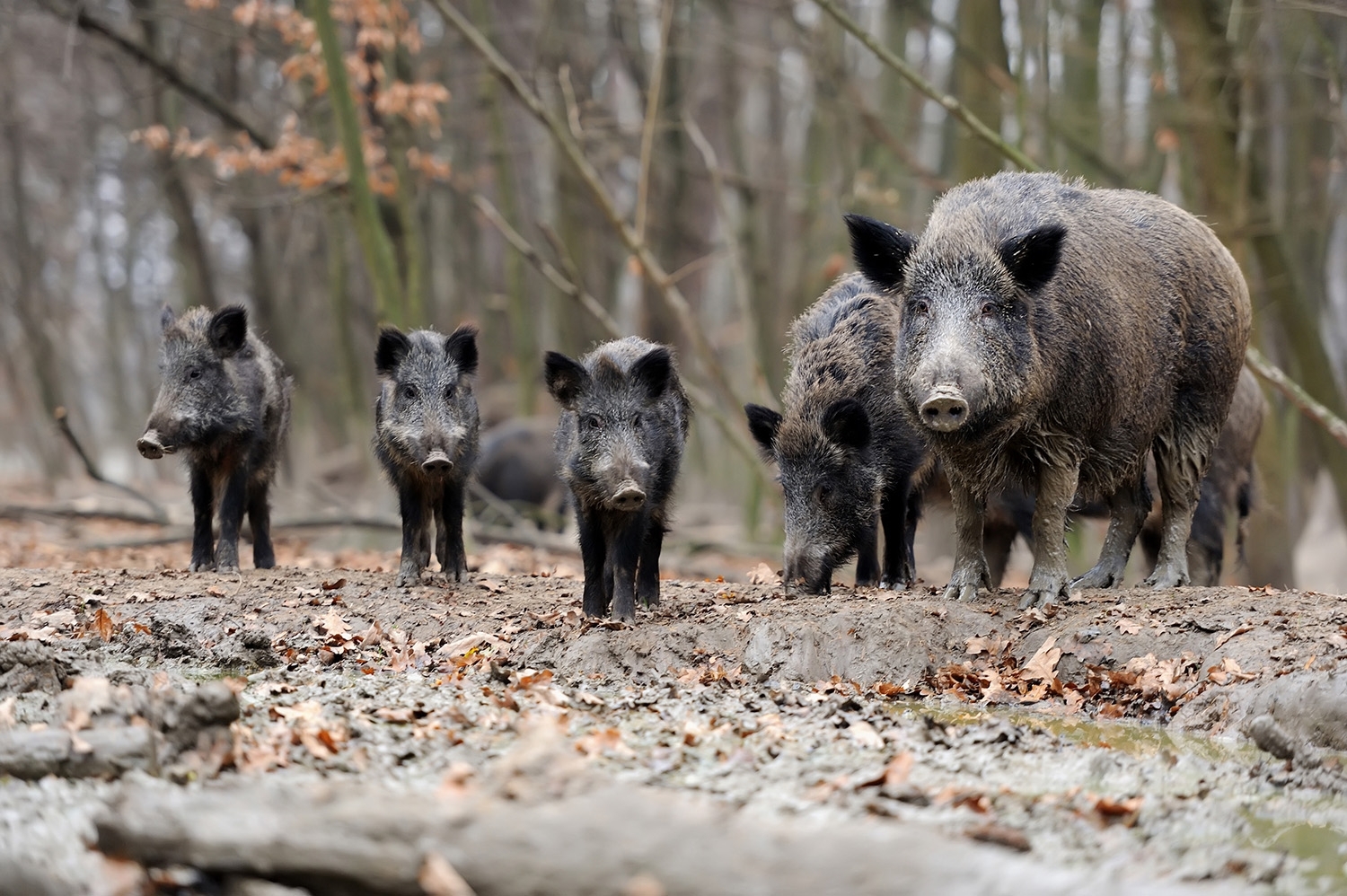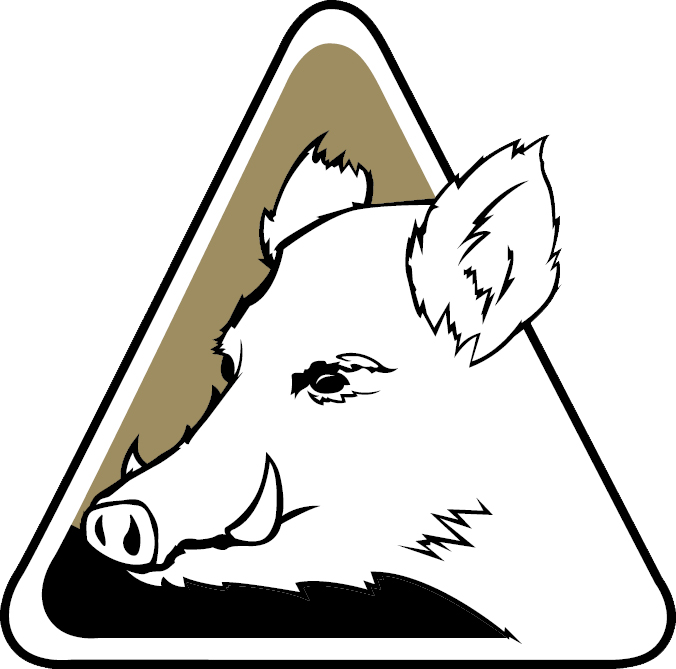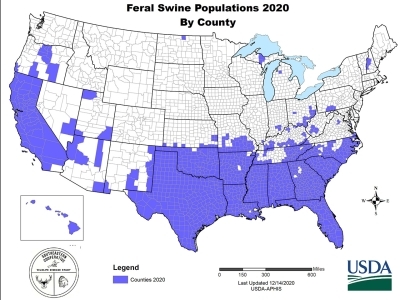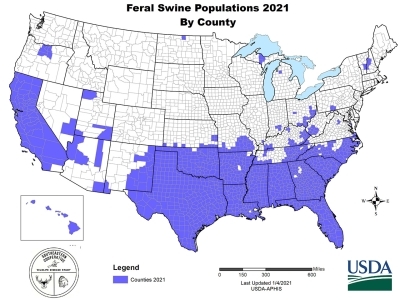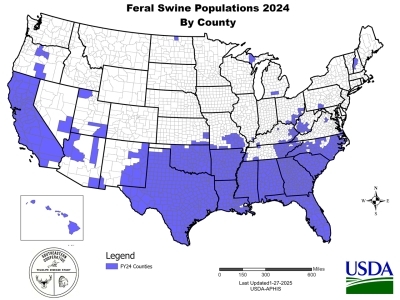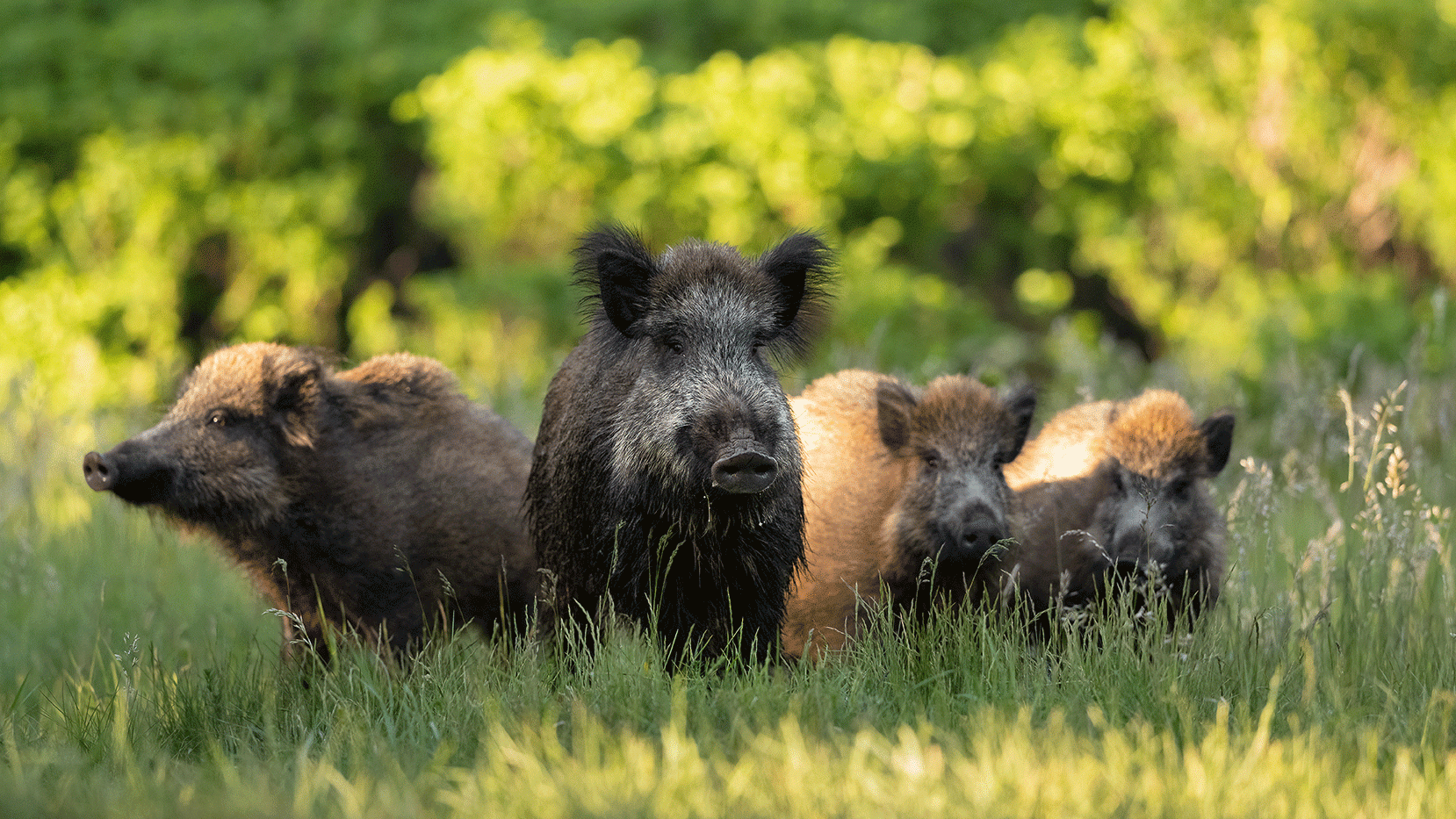
The National Feral Swine Damage Management Program has effectively reduced the number of states with feral swine populations and curbed expansion in the U.S. Efforts to reduce the invaded range of feral swine include targeted removal efforts, promoting the reporting of new populations in areas with no known feral swine, and the rapid response and removal of emerging or translocated feral swine. This has led to enhanced public safety and less damage to farmers nationwide.
History of Feral Swine in the Americas
Feral swine are not native to the Americas. They were first brought to the United States in the 1500s by early explorers and settlers as a source of food. Free-range livestock management practices and escapes from enclosures led to the first establishment of feral swine populations within the United States. In the 1900s, the Eurasian or Russian wild boar was introduced into parts of the United States for the purpose of sport hunting. Today, feral swine are a combination of escaped domestic pigs, Eurasian wild boars, and hybrids of the two.

Feral Swine Populations by County, 1982-2024
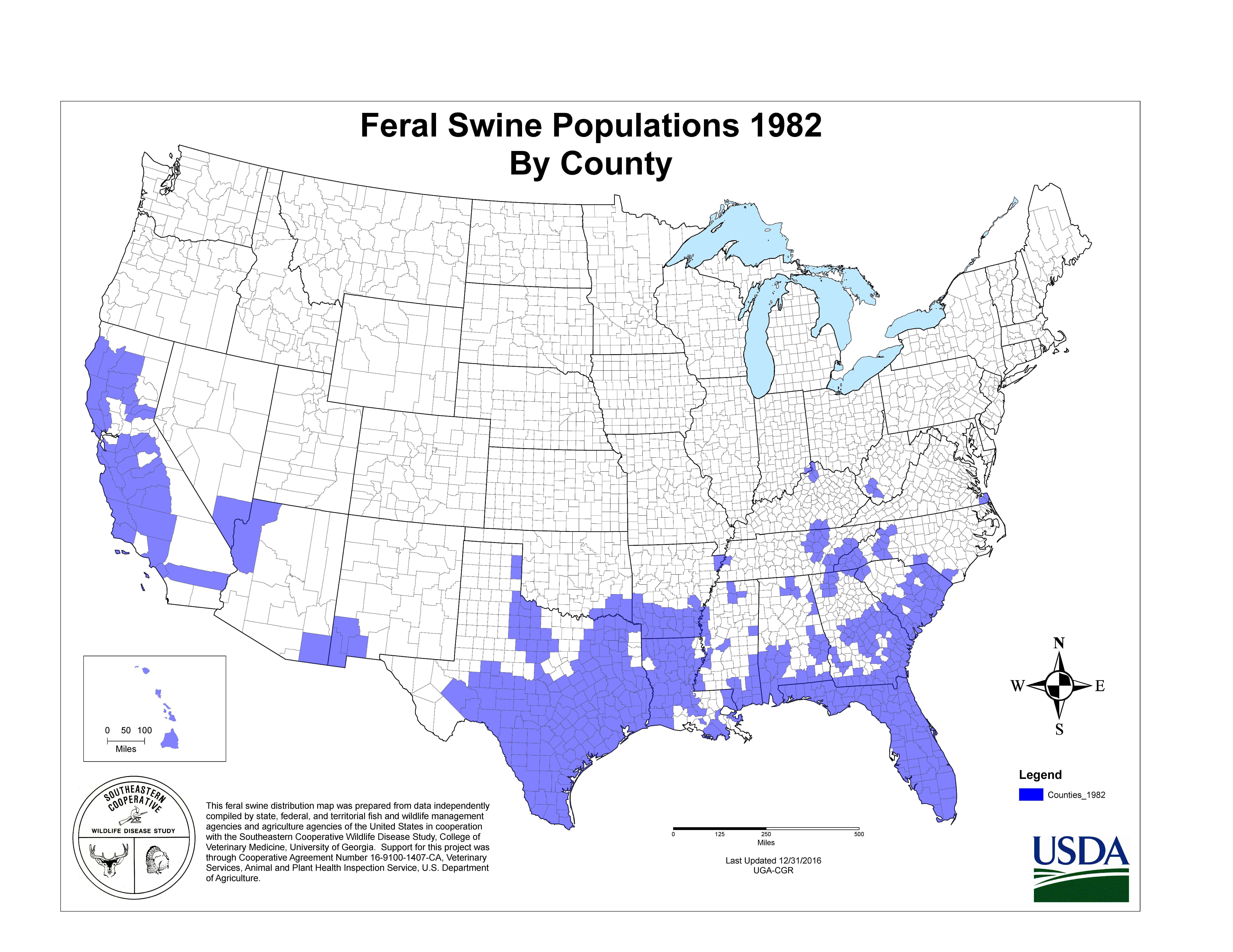
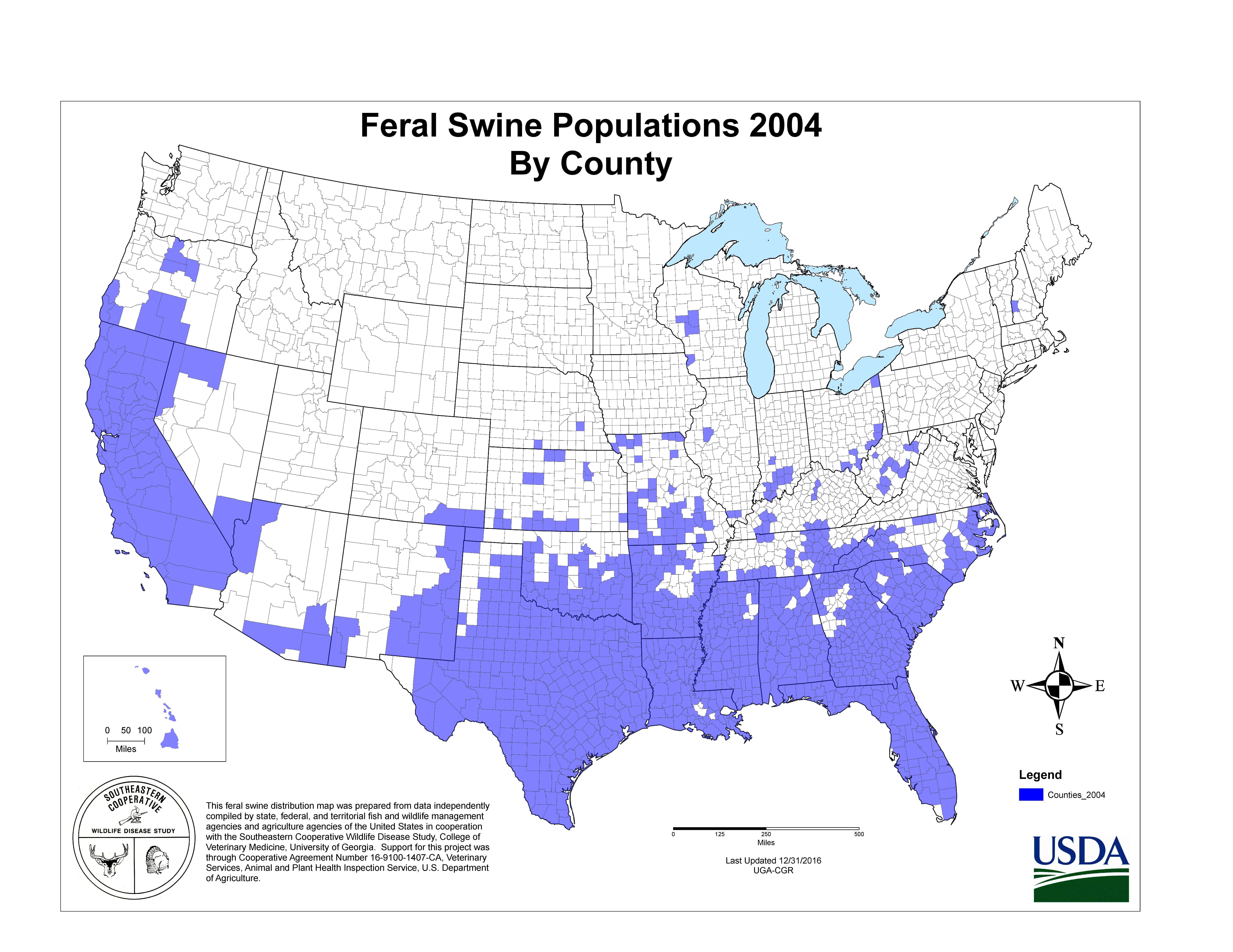
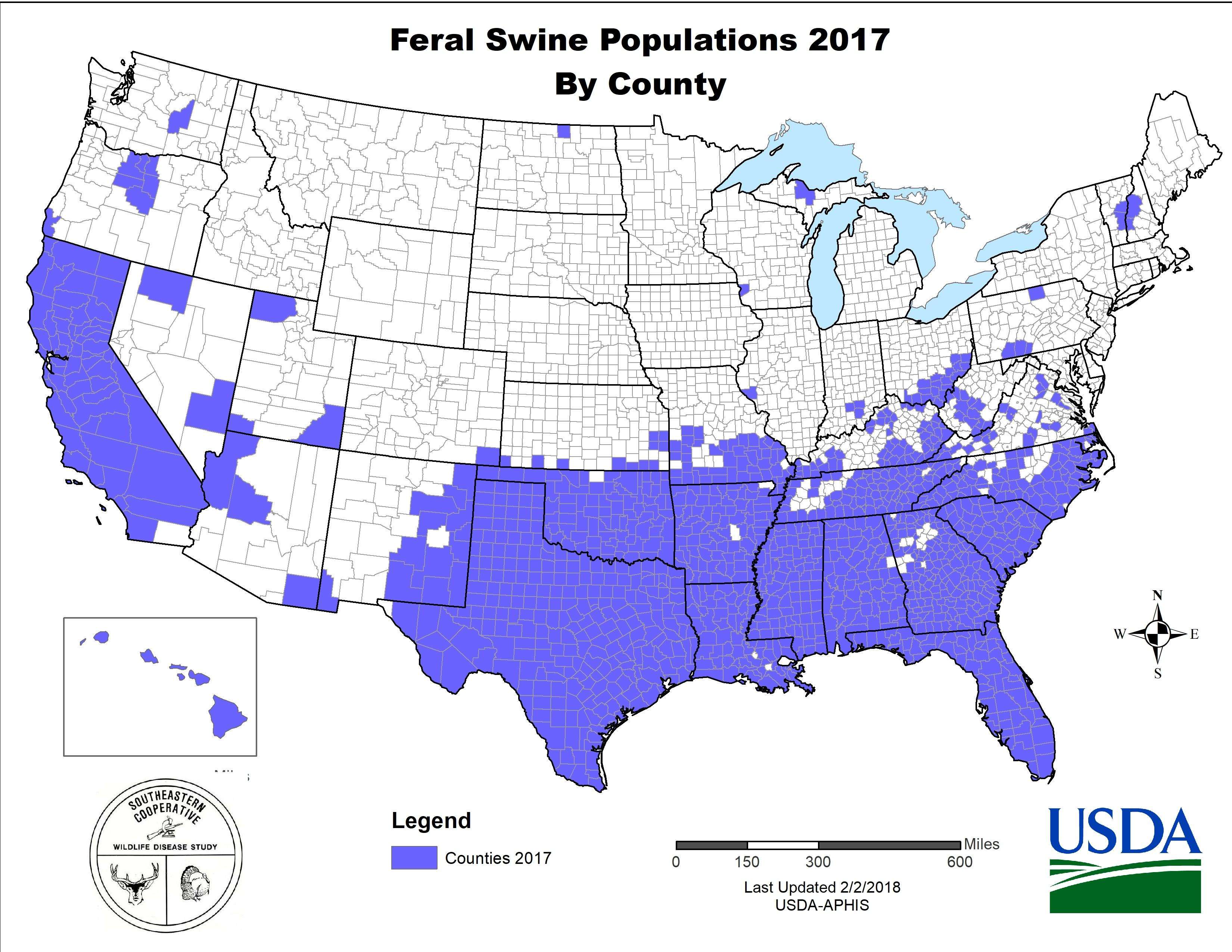
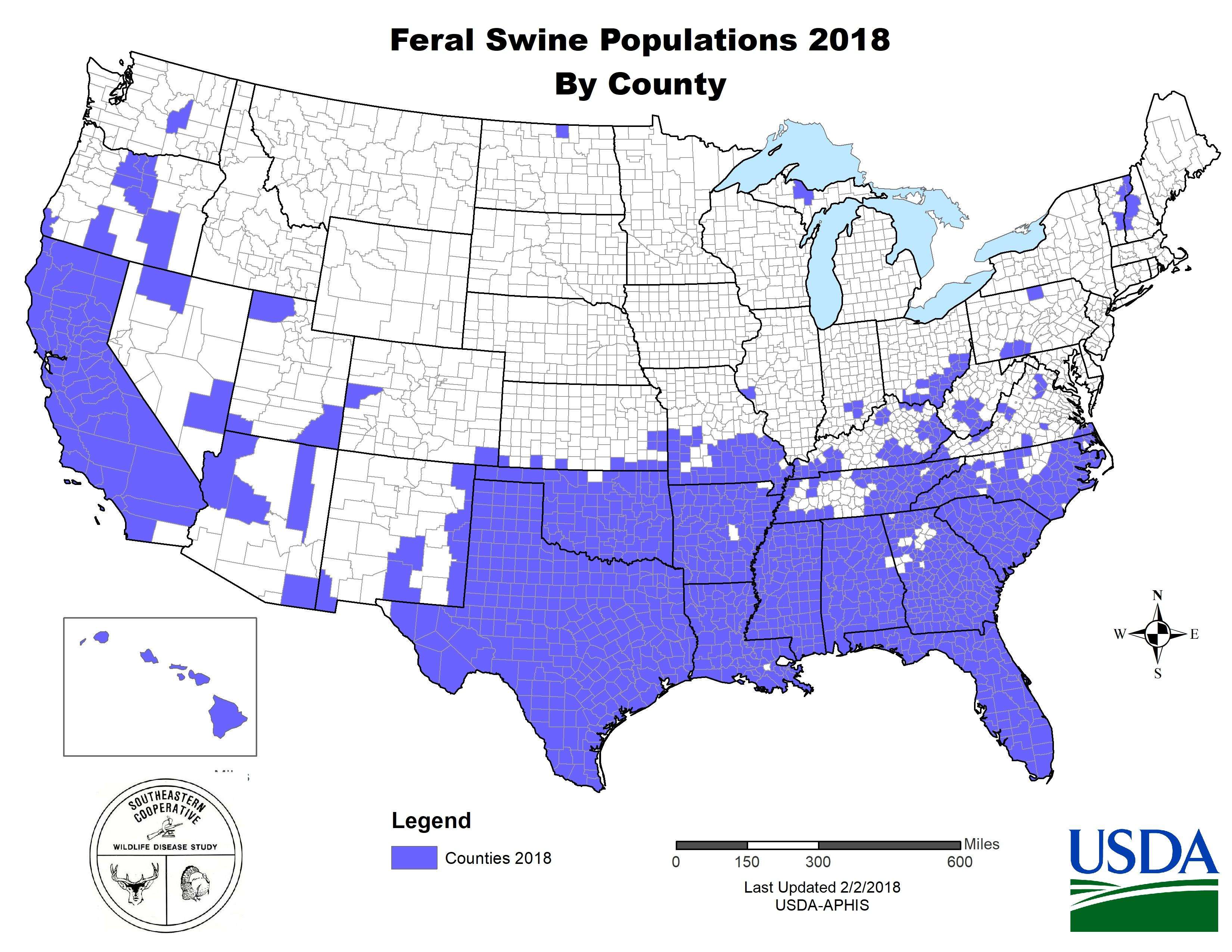
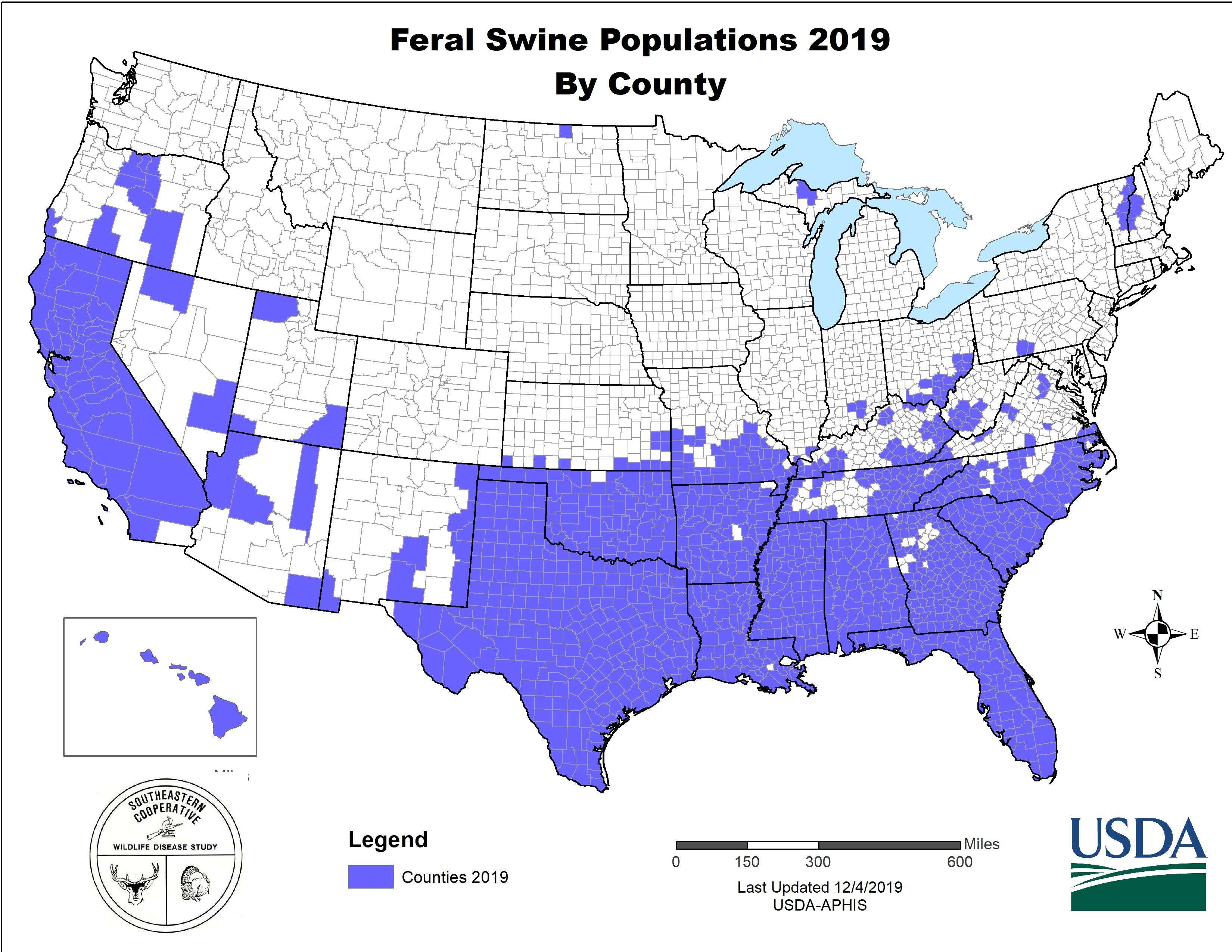


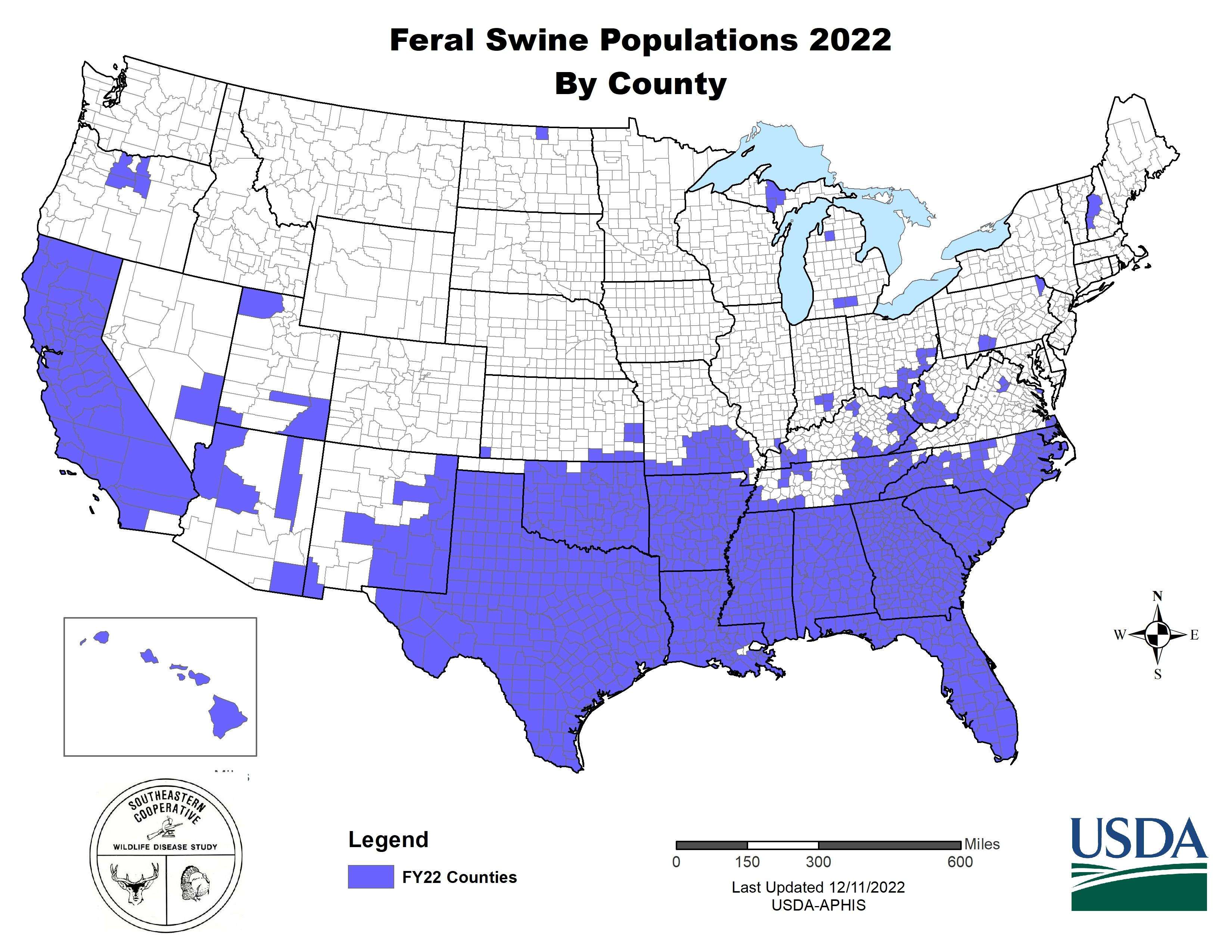
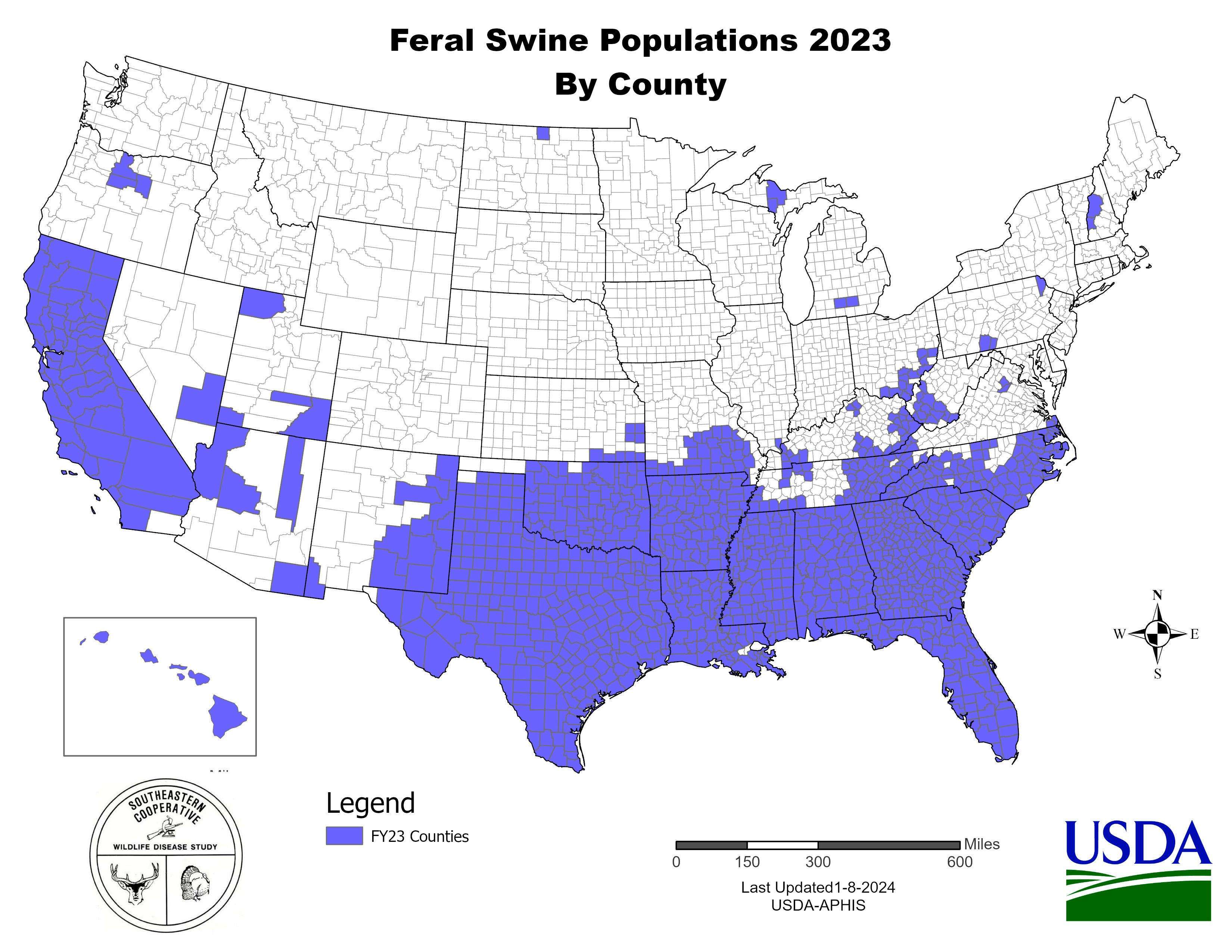

Feral swine populations by county in 1982.
Feral swine populations by county in 2004.
Feral swine populations by county in 2017.
Feral swine populations by county in 2018.
Feral swine populations by county in 2019.
Feral swine populations by county in 2020.
Feral swine populations by county in 2021.
Feral swine populations by county in 2022.
Feral swine populations by county in 2023.
Feral swine populations by county in 2024.


